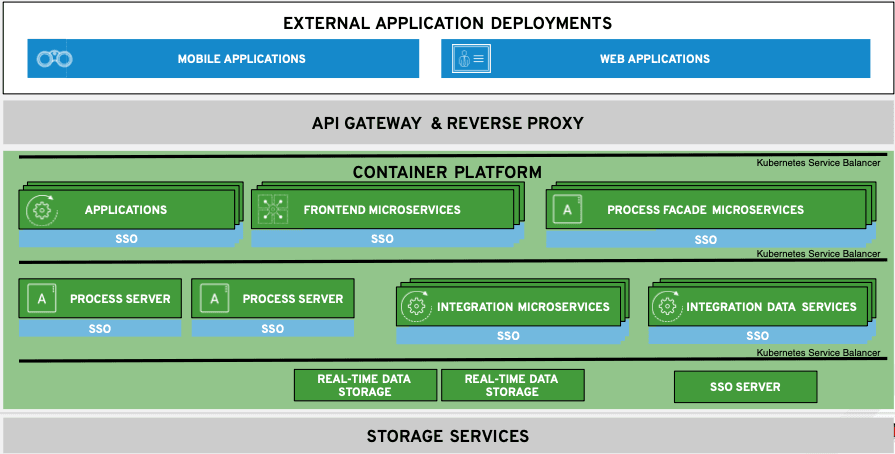Integration Key to Customer Experience – Storage Services
In my previous article from this series we looked in to details that determine how your integration becomes the key to transforming your customer experience.
It started with laying out the process of how I’ve approached the use case by researching successful customer portfolio solutions as the basis for a generic architectural blueprint.
Now it’s time to cover various blueprint details.

This article covers the final elements in the blueprint storage services, which are fundamental to the generic architectural overview.
Architectural details
As mentioned before, the architectural details covered here are base on real customer integration solutions using open source technologies. The elements presented here are then the generic common architectural elements that I’ve identified and collected in a generic architectural blueprint. It’s my intent to provide a blueprint that provides guidance and not deep technical details.

This section covers the visual representations as presented, but it’s expected that they’ll be evolving visually over time. There are many ways to represent each element in this architectural blueprint, but I’ve chosen icons, text and colours that I hope are going to make it all easy to absorb. Feel free to post comments at the bottom of this post, or contact me directly with your feedback.
Now let’s take a look at the details in this architecture and outline the elements uncovered in my research.
Storage
While every organization needs and certainly has chosen one or more the storage services described in this article, for completeness I’ve presented the most common choices found in my research.

The basic legacy solution every organization researched had was a
virtual block storage (VBS) solution. It can be in your datacenter, on site in your developer machine, or hosted by almost any cloud provider. It provides the fixed-size raw storage capacity and must have consistent I/O performance with low-latency connectivity.

When files and data sets become very large, then object-based storage (OBS) becomes the service of choice. It’s available on premise or as services hosted by most cloud providers to ensure you can leverage the persistence of your choice for your specific use case.
For container-based applications and services, persistence is achieved with
container-native storage (CNS) solutions. As previously mentioned, central to all research conducted was a distinct leaning towards the use of a container platform for applications and microservices.

The need for storage for these container-based elements leads the organization to search for CNS solutions. It’s native to the container platform and delivers the performance and ease of use desired by developers and architects constructing the integration solutions for omnichannel.
The key to our generic integration with these storage services lies in the previously discussed integration data microservices that make all forms of storage services available across your architecture. These details are not all-knowing, but should give you the guidance you’d need to get started in your own architectural situations.
What’s next
This overview covers the container platform elements that make up our architecture blueprint for omnichannel customer experience use case.
An overview of the series on omnichannel customer experience portfolio architecture blueprint can be found here:
- An introduction
- Generic common architectural elements
- External application details
- API management details
- Container platform essentials
- Storage services
- Dissecting several specific cases of integration architecture
Catch up on any articles you missed by following one of the links above.
Next in this series, we start taking a look at specific integration architectures that tie in all the elements we’ve discussed as part of a specific case in an architecture for omnichannel customer experience.
Published on Java Code Geeks with permission by Eric Schabell, partner at our JCG program. See the original article here: Integration Key to Customer Experience – Storage Services Opinions expressed by Java Code Geeks contributors are their own. |









